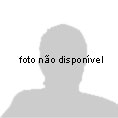XINFORMAÇÕES SOBRE DIREITOS AUTORAIS
As obras disponibilizadas nesta Biblioteca Digital foram publicadas sob expressa autorização dos respectivos autores, em conformidade com a Lei 9610/98.
A consulta aos textos, permitida por seus respectivos autores, é livre, bem como a impressão de trechos ou de um exemplar completo exclusivamente para uso próprio. Não são permitidas a impressão e a reprodução de obras completas com qualquer outra finalidade que não o uso próprio de quem imprime.
A reprodução de pequenos trechos, na forma de citações em trabalhos de terceiros que não o próprio autor do texto consultado,é permitida, na medida justificada para a compreeensão da citação e mediante a informação, junto à citação, do nome do autor do texto original, bem como da fonte da pesquisa.
A violação de direitos autorais é passível de sanções civis e penais.
As obras disponibilizadas nesta Biblioteca Digital foram publicadas sob expressa autorização dos respectivos autores, em conformidade com a Lei 9610/98.
A consulta aos textos, permitida por seus respectivos autores, é livre, bem como a impressão de trechos ou de um exemplar completo exclusivamente para uso próprio. Não são permitidas a impressão e a reprodução de obras completas com qualquer outra finalidade que não o uso próprio de quem imprime.
A reprodução de pequenos trechos, na forma de citações em trabalhos de terceiros que não o próprio autor do texto consultado,é permitida, na medida justificada para a compreeensão da citação e mediante a informação, junto à citação, do nome do autor do texto original, bem como da fonte da pesquisa.
A violação de direitos autorais é passível de sanções civis e penais.
Coleção Digital
Título: CELLULOSE NANOFIBERS AS A REACTIVE TEMPLATE FOR SYNTHESIS OF ADVANCED NANOMATERIALS Autor: LUCAS TONETTI TEIXEIRA
Instituição: PONTIFÍCIA UNIVERSIDADE CATÓLICA DO RIO DE JANEIRO - PUC-RIO
Colaborador(es):
ROGERIO NAVARRO CORREIA DE SIQUEIRA - ADVISOR
BOJAN MARINKOVIC - CO-ADVISOR
Nº do Conteudo: 66197
Catalogação: 11/03/2024 Liberação: 11/03/2024 Idioma(s): PORTUGUESE - BRAZIL
Tipo: TEXT Subtipo: THESIS
Natureza: SCHOLARLY PUBLICATION
Nota: Todos os dados constantes dos documentos são de inteira responsabilidade de seus autores. Os dados utilizados nas descrições dos documentos estão em conformidade com os sistemas da administração da PUC-Rio.
Referência [pt]: https://www.maxwell.vrac.puc-rio.br/colecao.php?strSecao=resultado&nrSeq=66197&idi=1
Referência [en]: https://www.maxwell.vrac.puc-rio.br/colecao.php?strSecao=resultado&nrSeq=66197&idi=2
Referência DOI: https://doi.org/10.17771/PUCRio.acad.66197
Resumo:
Título: CELLULOSE NANOFIBERS AS A REACTIVE TEMPLATE FOR SYNTHESIS OF ADVANCED NANOMATERIALS Autor: LUCAS TONETTI TEIXEIRA
BOJAN MARINKOVIC - CO-ADVISOR
Nº do Conteudo: 66197
Catalogação: 11/03/2024 Liberação: 11/03/2024 Idioma(s): PORTUGUESE - BRAZIL
Tipo: TEXT Subtipo: THESIS
Natureza: SCHOLARLY PUBLICATION
Nota: Todos os dados constantes dos documentos são de inteira responsabilidade de seus autores. Os dados utilizados nas descrições dos documentos estão em conformidade com os sistemas da administração da PUC-Rio.
Referência [pt]: https://www.maxwell.vrac.puc-rio.br/colecao.php?strSecao=resultado&nrSeq=66197&idi=1
Referência [en]: https://www.maxwell.vrac.puc-rio.br/colecao.php?strSecao=resultado&nrSeq=66197&idi=2
Referência DOI: https://doi.org/10.17771/PUCRio.acad.66197
Resumo:
Due to significant environmental pollution, different strategies require
to be implemented for environmental remediation. Among the different approaches, it is possible to cite the adsorption of metallic cations from aqueous
solutions, adsorption of pharmaceuticals, and the use and storage of green
energy. With this in mind, the present study reports the use of the mentioned strategies. Thus, oxidized cellulose nanofibers, produced via TEMPO
(2,2,6,6-tetramethyl-piperidinyl-N-oxyl), TCNF, were used for the removal of
iron, zinc, and cobalt cations from aqueous solution. Their adsorptive capacity
for the removal of pure iron and zinc was 5902 and 5633 Milligram per gram−1
, respectively.
When iron and zinc were removed from the same solution, the adsorptive
capacity of TCNF was 5852 and 5622 Milligram per gram−1
, respectively. For cobalt adsorption, its concentration decreased from 50 gram per liter−1
to 8.3 gram per liter−1
. Subsequently,
the TCNF samples impregnated with metals were subjected to calcination
to produce nanostructured oxides. At temperatures above 300 C degrees, hematite
phases were identified, and at 400 C degrees, zincite and franklinite phases were identified through Rietveld refinements of the obtained diffractograms. Additionally,
when calcined in an inert atmosphere, the appearance of oxides was observed.
Moreover, all morphologies were analyzed via TEM and SEM, resembling a
nanocoral with thicknesses between 20 and 30 nm. The zinc ferrite samples
were applied to tetracycline adsorption with an adsorptive capacity of 18 miligram per
gram−1 and also as a capacitor, achieving a capacitance value of 2031 Farad per gram−1
. The
cobalt ferrite sample was used as a catalyst for hydrogen extraction from borohydride, and the amount of extracted H2 was around 476.4 liters of hydrogen produced per gram of sodium borohydride per gram of catalyst.
The activation energy for the reaction was calculated to be approximately 57
Kilojoules per mole−1
. Therefore, the innovative route for the synthesis of nanostructured
oxides appears to be promising.
| Descrição | Arquivo |
| COMPLETE |






